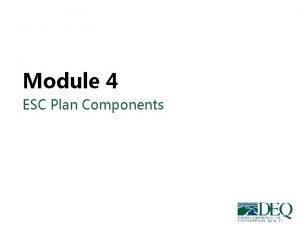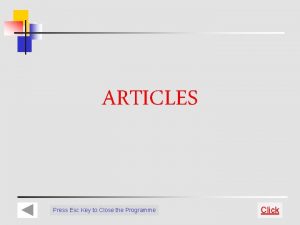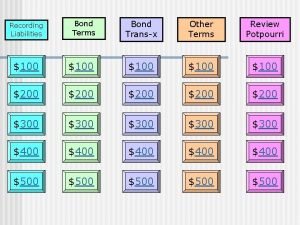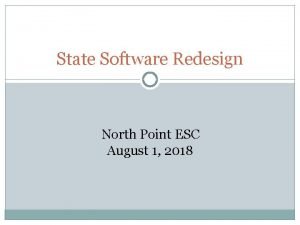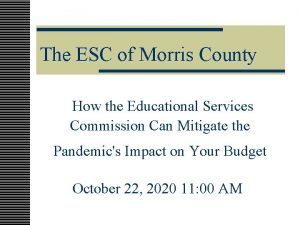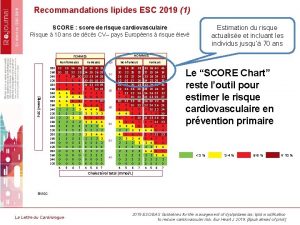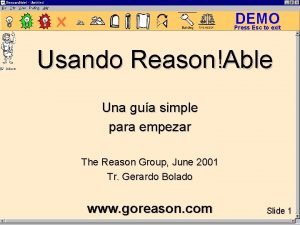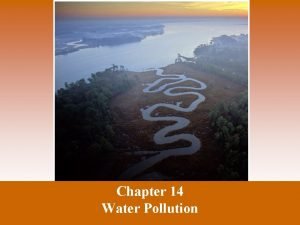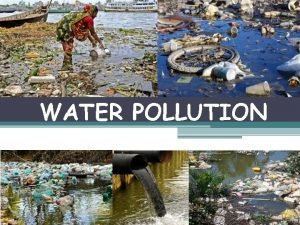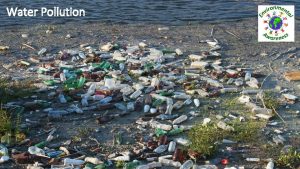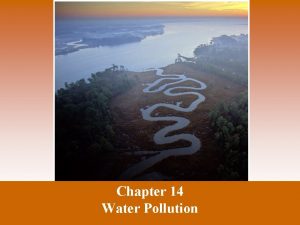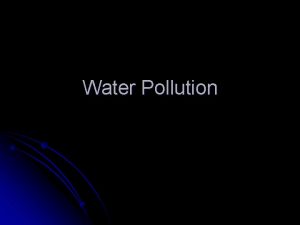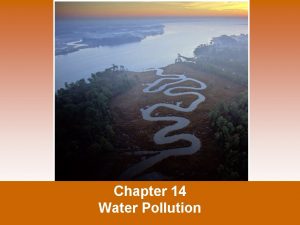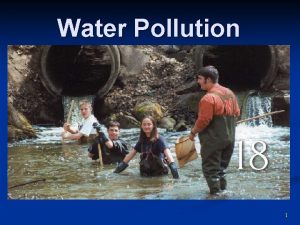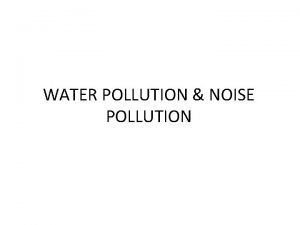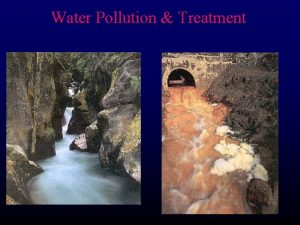Water Pollution Mr Price ESC Water Resources l

















- Slides: 17

Water Pollution Mr. Price ESC

Water Resources l Distribution of the World’s Water Resources l l l Fresh Water = A limited Resource l l Water is a renewable resource Water Cycle Earth’s water percentages Distribution of the Earth’s Surface Water l l l Surface water is fresh water on Earth’s land surface Lake, rivers, streams, and wetlands Surface water and human societies River system = a flowing network of water Watersheds = area of land that is drained by a river

Water Resources l Groundwater and Surface Water l l l groundwater = water stored beneath the Earth’s surface in sediment and rock formations Water table is the level where the rocks and soil are saturated (desert vs. wet regions) Aquifer = underground formation that contains groundwater (sponge) l l Water table forms the upper boundary of an aquifer Important for agriculture Porosity = amount of space between the particles that make up a rock Permeability = ability of rock or soil to allow water to flow through it (sandstone, limestone, or layers of sand gravel) l Impermeable clay and granite

Water Resources l Groundwater and Surface Water l Recharge zone = area of the earth’s surface where water percolates down into the aquifer l Environmentally sensitive l Affected by permeability of the surface l Managing recharge zones l Wells = a hole that is dug or drilled to reach groundwater l Cone-shaped depression

Water Use and Management l Patterns of Global Water Use l l Three major uses of Water – residential, agricultural, and industrial Availability, population, and economic conditions affect how people use water l l In Asia 80% of water is used for agriculture Only 38% of water is used for agriculture in Europe 19% of water worldwide is used for industry 8% of water is used for household activities globally l l In the U. S. the average person uses 300 L of water/day In India the average person uses 40 L of water/day

Water Use and Management l Water Treatment Most water must be treated to make it safe to drink (potable) l Water treatment removes toxins like mercury, arsenic, and lead l Pathogens = organisms that cause illness or disease l l Found in water contaminated by sewage or animal feces l Bacteria, viruses, protozoa, and parasitic worms

Water Use and Management l How is Water Used l Industrial Water Use l l Water is used to manufacture goods, dispose of waste, and to generate power Water needed for manufacturing l l 1000 L of water needed to produce 1 kg of aluminum 500, 000 L of water needed to produce one car Cooling power plants Agricultural Water Use l l 80 gal of water to produce one ear of corn 67% of the water used in the world is for agriculture 80% of water used in agriculture is evaporated and never reaches the plants roots Irrigation = providing plants with water form sources other than direct precipitation

Water Use and Management l Fresh Water Management l l Dams and water diversion canals are designed to meet the needs of people not living near surface water Water Diversion Projects l l l Supplies water to dry regions Owens river and Colorado river Dams and Reservoirs l Dam – is a structure built across a river to control the river’s flow l l l About 20% of the world’s electricity is generated by hydro-electric dams Negative consequences of dams Reservoir – an artificial lake formed behind the dam l Reservoir water can be used for flood control, drinking water, irrigation, recreation, and industry

Water Use and Management l Conservation l l Water conservation in agriculture l l l How water is lost in irrigation Drip irrigation systems Water conservation in industry l l l One way that we can help ensure that everyone will have enough water at a reasonable price Recycling of cooling water and wastewater Innovation programs Water conservation at home l Pg. 282

Water Use and Management l Solutions for the future – when conservation is not enough l Desalination – removing salt from salt water l Desalination plants heat salt water and collect the evaporated water l l l Consumes a lot of energy Often too expensive for most countries to use Transporting water – transport water from other regions l l Greek islands Alaska Towing ice bergs piping

Water Pollution l l Defined as the introduction of chemical, physical, or biological agents into water that degrade water quality and adversely affect the organisms that depend on the water Two underlying causes of Water Pollution l l l Industrialization Rapid human population growth Point-Source Pollution l Defined as pollution discharge from a single source l A list of point source Pollution

Water Pollution l Nonpoint-Source Pollution Comes from many different sources that are often difficult to identify l Difficult to regulate l 96 % of polluted bodies of water in the United States were contaminated by nonpoint sources l List and causes of nonpoint source polution l

Water Pollution l Pollutant Types and Sources l l l Pathogens Organic Matter Organic Chemicals Heavy Metals Physical Agents Waste Water – Water that contains waste from homes or industry l l Treating Wastewater Sewage Sludge – the solid material that remains after treatment l l Problems Uses

Water Pollution l Artificial Eutrophication l l l Thermal Pollution l l l Eutrophic – when lakes and slow moving streams contain an abundance of nutrients (natural process) Eutrophication caused by humans is called artificial eutrophication When the temperature of a body of water increases Temperature vs. Oxygen Groundwater Pollution l l Percolates down from the earth’s surface Leaking underground storage tanks

Water Pollution l Cleaning up groundwater pollution Groundwater pollution is one of the most challenging environmental problems l Sticks around for generations l Purging pollution out of ground water can take hundreds or thousands of years l Water dispersed in throughout large areas of rock and sand l Toxins coat groundwater sediments l

Ocean Pollution l l l l Pollutants are often dumped directly into the oceans 85% of the oceans pollutants come from activities on land Coastal ecosystems are affected most by pollution Oil Spills l l l 1989 Exxon Valdez oil spill 2001 oil spill of the coast of Galapagos Islands 37 million gallons of oil are spilled from oil tankers each year l l Only accounts for about 5 percent of oil pollution 200 million to 300 million gallons of oil enter the ocean from nonpoint sources l 10 times the amount of oil spilled by tankers

Water Pollution and Ecosystems l l l Immediate damage Biomagnification – accumulation of pollutants at successive levels of the food chain Cleaning up water pollution l l l 1969 the Cuyahoga river Clean water act 1972 Oil pollution act of 1990 Safe drinking water act 1975 1972 marine protection act 1987 water quality act



